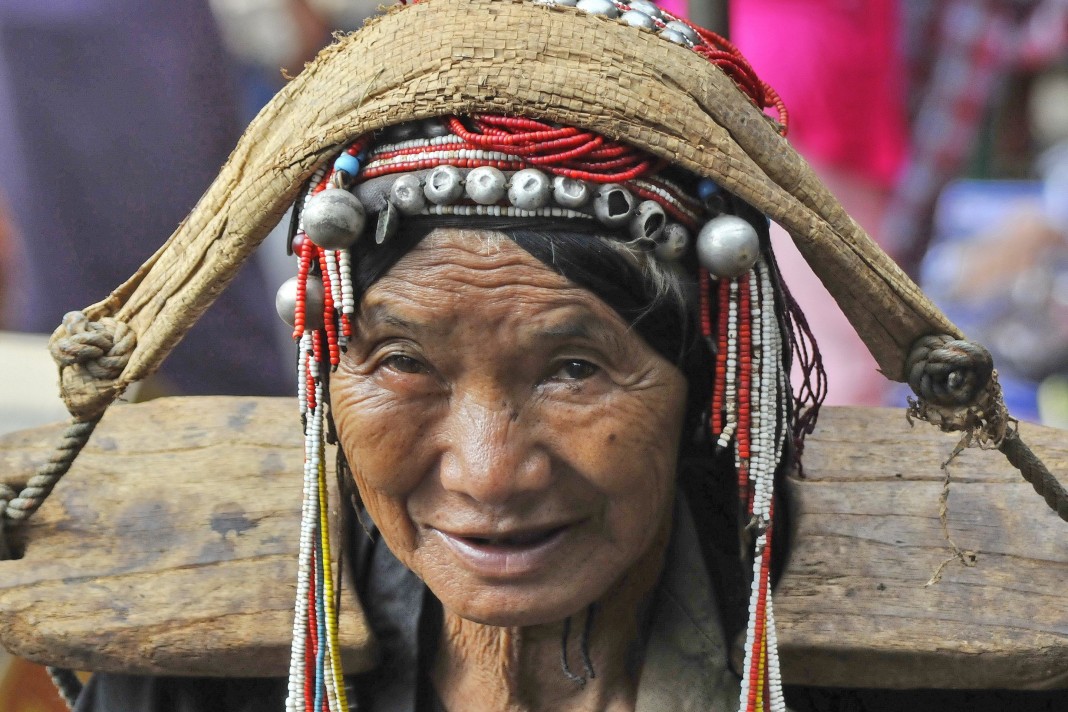Many of the younger Akha women are very smart and savvy, and we’ve heard better English banter from some of them than from many professional guides. Those in the tourist trade stock up on trinkets in their home villages (or increasingly these days from wholesalers in Bangkok), leave the kids with the grandparents and split a room with 15 other women as they bid to seek their fortune in the big smoke.

The Akha people, who are a part of the Yi/Lolo sub group of the Tibeto-Burman family, originate in southern China, and most Thai Akha arrived from Burma within the last century.
Akha and their close relatives the Hani are found across southern Yunnan; Akha villages proliferate in Nam Tha and Muang Sing districts of Laos, across wide swathes of northeastern Burma, and in Thailand they are mainly concentrated in Mae Ai and Tha Ton districts of Chiang Mai, and the Mae Salong region in Chiang Rai.
The various Akha sub-groups are identified by their elaborate head-dresses, with the three main Thai groups being the Lomi, (trapezium shaped backboard with larger silver beads), Ulo (cone shaped), and Phami (a wider, larger trapezium shape but with smaller mesh silver beads head-dresses) — if we’ve understood correctly.
In our defence, it can get very complicated with many variations from village to village and with certain extra hat accoutrements for special occasions and so on. Culturally things can change pretty quickly too, with one village being Christian, another down the trail still animist and yet another housing a Buddhist wat.
Traditionally villages are entered through a wooden and bamboo spirit gate, designed to keep out unwelcome spirits, and usually found in association with graphically carved wooden male and female figures.
Other defining characteristics of the Akha people are a strong importance placed upon their ancestors and a belief in the “Akha way”, an intricate system of traditional beliefs and values. The Akha are also known for their famous swing ceremony held towards the end of August every year. They’re generally welcoming and friendly to respectful visitors and these days with many of their women being so widely travelled you can also find English speakers in most villages so ... go say hi!
Reviewed by
Mark Ord
Based in Chiang Mai, Mark Ord has been travelling Southeast Asia for over two decades and first crossed paths with Travelfish on Ko Lipe in the early 1990s.